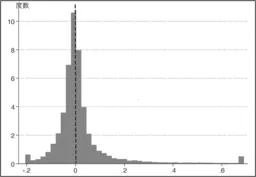

Future-Oriented Strategies of Underperforming Firms: Analyzing Impact of Optimistic Profit Forecasts
Future-Oriented Strategies of Underperforming Firms
In a recent study, researchers from Japanese universities explored how companies that fail to meet their current profit expectations often attempt to soften negative perceptions by providing optimistic forecasts for the next fiscal period. This trend, particularly observed in Japanese firms, suggests that executives may strategically manage impressions under challenging circumstances.
Key Findings
1. Behavioral Patterns: The study found that firms reporting lower than expected profits tend to announce bullish profit forecasts for the following year. This behavior was noted as a strategy to mitigate negative market reactions to their current underperformance.
2. Market Reaction: Despite missing current profit targets, the stock market shows a positive correlation with a company's optimistic predictions for future profits. However, this effect diminishes with repeated forecasts, indicating a need for true performance.
3. Challenges in Forecast Accuracy: Approximately 65% of the optimistic forecasts made by executives following a current shortfall were found to be unattainable, which raises questions about the sustainability and truthfulness of such strategies.
4. Influence of Institutional Investors: The presence of institutional investors, analyst expectations, and female board members appeared to weaken the effectiveness of this impression management tactic. Firms with these features experienced less favorable market reactions to overly optimistic forecasts.
Research Background
The study encompassed an analysis of 3,273 Japanese companies between 2003 and 2015, scrutinizing 21,392 profit forecasts. It provides an in-depth look at how companies navigate financial disappointments while attempting to project a brighter future.
Historical Context
Historically, companies have been tasked with aligning their performance with stakeholder expectations. Organizational Impression Management (OIM) has therefore become a focal point; firms develop strategies to counteract bad news and maintain their image.
For instance, tactics like discretionary accounting adjustments or conservative forecasts can lower stakeholder expectations, but the methods revealed in this study suggest a more proactive approach.
Strategic Implications
Interestingly, the researchers argue that presenting optimistic future forecasts may divert stakeholder attention away from present bad news, creating an environment where companies can work towards achieving those optimistic targets. The flexibility of time allows for potential successes, but this method also entails risks, as stakeholders are usually attentive to the accuracy of these forecasts.
By addressing the immediate impact of disappointing results, executives may feel pressured to provide optimistic outlooks despite potential long-term costs associated with overpromising.
Broader Research Significance
This research introduces a forward-looking strategy in impression management literature, challenging previous notions that firms passively accept externally defined expectations. Instead, it underscores the role of executives in shaping stakeholder perceptions actively.
Additionally, recognizing that stakeholder evaluations may weaken over time if optimistic predictions are repeatedly unmet serves as a cautionary note for management.
The results of this study, published in the Review of Managerial Science, not only underscore the need for realistic forecasting but also highlight the nuances of organizational behavior in response to investor sentiment.
Future Research Directions
The findings prompt an exploration of different impression management techniques that communicate a positive future while also keeping stakeholders informed of present challenges. Comparative studies across different countries and corporate settings could enhance understanding of the generalizability of these strategies. Moreover, the impact of individual executive traits on impression management effectiveness remains a significant area for future inquiry.
Conclusion
Creating what may seem to be unrealistic forecasts serves to illustrate the complex interplay between current performance and future aspirations in corporate management. Understanding this dynamic will aid stakeholders in discerning the motives behind executive intentions and the potential implications for market behaviors.

Topics Business Technology)










【About Using Articles】
You can freely use the title and article content by linking to the page where the article is posted.
※ Images cannot be used.
【About Links】
Links are free to use.